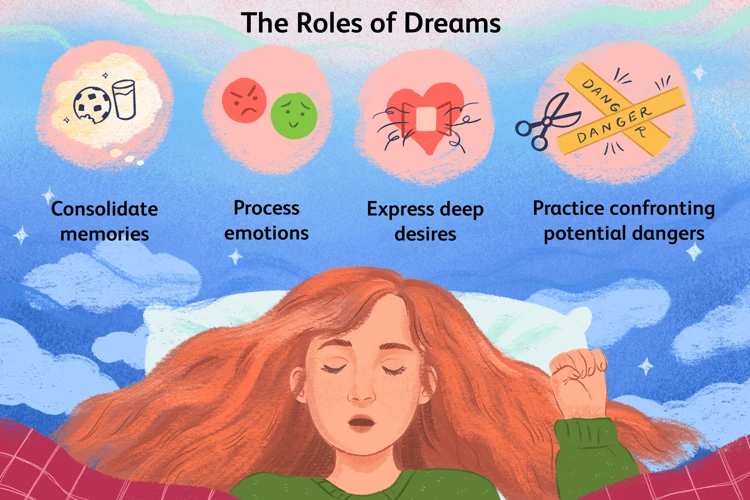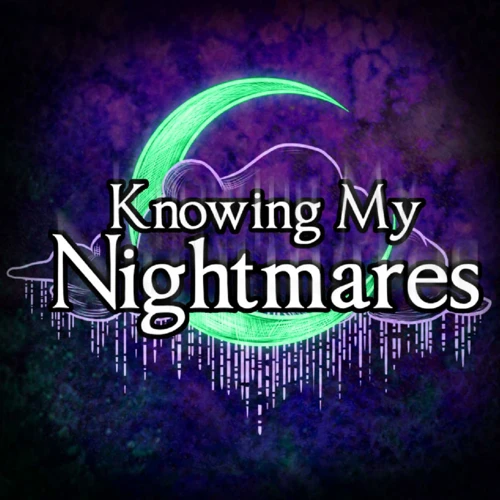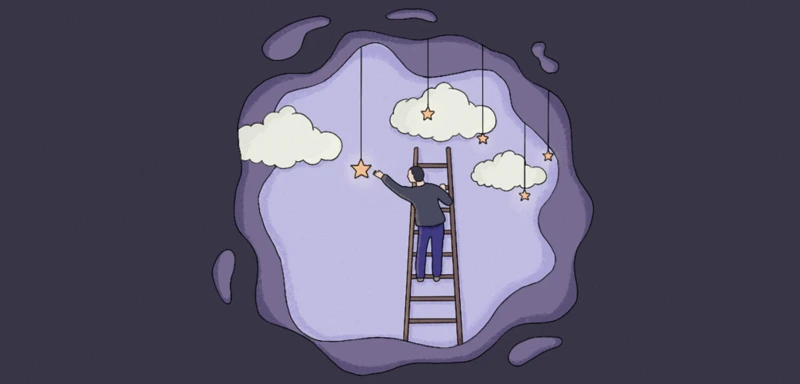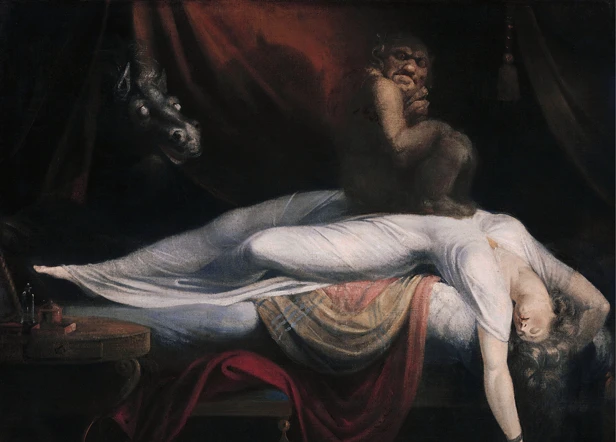Nightmares have long held a fascination for people, both in reality and in the realms of literature and film. The horrors depicted in these eerie dreams often reflect our deepest fears, anxieties, and experiences. In this captivating article, we will explore famous nightmares throughout history and their presence in literature and film. From the terrifying witch trials of the past to the haunting events of the Titanic, from surreal transformations to the macabre world of Frankenstein, and from the chilling nightmares on Elm Street to the psychological horror of The Shining, we will delve into the symbolism, interpretations, and even techniques to control and transform these haunting dreams. Let us unlock the secrets of the night and explore the dark recesses of our collective imagination.
Real-Life Nightmares

Nightmares can sometimes find their roots in real-life events that have left a lasting impact on society. Here are a few examples of historical nightmares:
- The Witch Trials Nightmare: One of the most infamous nightmares in history is the Salem Witch Trials of 1692. The hysteria and paranoia surrounding witchcraft led to the execution of innocent people accused of practicing dark magic. This nightmare serves as a grim reminder of the dangers of mass hysteria and the devastating consequences it can have.
- The Titanic Nightmare: The sinking of the RMS Titanic in 1912 is a real-life nightmare that continues to captivate the world. The tragic loss of life and the haunting stories of those on board have become an enduring symbol of human hubris and the fragility of life. The Titanic nightmare serves as a cautionary tale, reminding us of the consequences of overconfidence and the need for proper safety measures.
- The Hiroshima Nightmare: The atomic bombing of Hiroshima and Nagasaki in 1945 during World War II is an unimaginable nightmare that forever changed the world. The devastation inflicted by these bombings serves as a stark reminder of the destructive power of nuclear weapons and the lasting impact of war on innocent lives.
These real-life nightmares highlight the immense power of collective fear, tragedy, and human suffering. They have become a part of our shared history and serve as cautionary tales for future generations.
The Witch Trials Nightmare
The Witch Trials Nightmare refers to the horrific events that unfolded during the Salem Witch Trials in 1692. This nightmarish period was characterized by widespread panic, fear, and paranoia surrounding accusations of witchcraft.
It all began when a group of young girls in Salem Village, Massachusetts, claimed to be possessed by the devil and accused several individuals of practicing witchcraft. The accusations quickly spread, resulting in a wave of arrests and trials.
The trials themselves were a grim spectacle, with innocent men and women being subjected to harsh interrogations, cruel punishments, and ultimately, execution. The nightmare of the Salem Witch Trials reflected the deeply rooted fears and superstitions of the time.
The underlying causes of the witch trials can be attributed to various factors, such as religious intolerance, social tensions, and political rivalries. The collective paranoia and hysteria that gripped the community fueled the nightmare, leading to the loss of innocent lives.
This dark episode in history serves as a reminder of the dangers of mass hysteria and the consequences of succumbing to fear and prejudice. The Witch Trials Nightmare continues to be a cautionary tale, urging us to question and challenge our beliefs and to be wary of the destructive power of mob mentality.
While the Salem Witch Trials may seem like a distant nightmare from the past, they reflect common nightmare themes that still resonate today. The fear of being falsely accused, the loss of control, and the presence of malevolent forces are among the prevalent themes that continue to haunt our collective imagination.
If you’re interested in learning more about common nightmare themes, you can read our article on Common Nightmare Themes.
The Titanic Nightmare
The Titanic nightmare stands as a haunting reminder of human ambition and the fragility of life. Here are some key details about this tragic event:
- The “Unsinkable” Ship: The RMS Titanic was a luxurious passenger liner that set sail on its maiden voyage on April 10, 1912. The ship was famously touted as “unsinkable,” leading to an overconfidence that ultimately proved to be disastrous.
- The Collision: On the night of April 14, 1912, the Titanic struck an iceberg in the North Atlantic Ocean. The collision caused a series of structural failures, leading to the ship’s eventual sinking in the early hours of April 15.
- The Loss of Life: The sinking of the Titanic resulted in the tragic loss of over 1,500 lives. The lack of sufficient lifeboats on board exacerbated the impact, as many passengers and crew members were left without means of escape.
- Survivor Stories: The survivors of the Titanic disaster recounted tales of heroism, tragedy, and survival against all odds. Their stories continue to captivate and evoke a sense of both awe and sorrow.
The Titanic nightmare serves as a reminder of the consequences that can arise from human overconfidence and the need for proper safety measures. It speaks to our mortality and the unpredictability of life’s circumstances. The sinking of the Titanic has been immortalized in literature, film, and popular culture, further cementing its place as one of the most enduring nightmares in history.
The Hiroshima Nightmare
The Hiroshima Nightmare refers to the devastating events that unfolded on August 6, 1945, when the United States dropped an atomic bomb on the Japanese city of Hiroshima. It was a day of unimaginable horror and destruction. The bomb, codenamed “Little Boy,” instantly killed an estimated 70,000 people, with thousands more suffering from severe injuries and radiation sickness. The aftermath of the bombing was a nightmare in itself, with widespread devastation, fires, and countless people displaced.
Survivors of the Hiroshima nightmare, known as hibakusha, lived through the unimaginable suffering and witnessed the loss of loved ones. Their stories reflect the horrors of the bombing and the long-term effects it had on their physical and emotional well-being. The Hiroshima nightmare serves as a stark reminder of the devastating consequences of nuclear warfare and the urgency to prevent such horrors from happening again.
The impact of the Hiroshima nightmare on the world stage was profound. It led to a reevaluation of the ethics and consequences of using nuclear weapons and played a significant role in shaping global attitudes towards nuclear disarmament. The memory of Hiroshima continues to haunt our collective consciousness as a reminder of the atrocities humanity is capable of committing.
Nightmares in Literature

Literature has been a platform for exploring the depths of human imagination, and nightmares have often played a significant role in shaping unforgettable stories. Here are a few notable examples:
- The Metamorphosis Nightmare: Franz Kafka’s “The Metamorphosis” is a surreal and unsettling tale where the main character, Gregor Samsa, wakes up one day to find himself transformed into a giant insect. This nightmarish transformation serves as a metaphor for feelings of alienation, isolation, and the terrifying loss of one’s identity.
- The Macbeth Nightmare: In William Shakespeare’s tragedy, “Macbeth,” the protagonist experiences a series of haunting nightmares after committing regicide and usurping the throne. These terrifying visions, such as the famous “bloody hands” scene, symbolize the guilt and psychological torment that plague Macbeth and ultimately lead to his downfall.
- The Frankenstein Nightmare: Mary Shelley’s classic novel, “Frankenstein,” explores the horrors of creating life through the character of Victor Frankenstein. The monstrous creature he brings to life becomes a symbol of his own guilt and the consequences of playing God. The novel delves into themes of abandonment, existential terror, and the moral implications of scientific experimentation.
These literary nightmares offer readers a glimpse into the darker aspects of the human psyche and delve into universal fears and anxieties. Through these gripping stories, authors have been able to tap into our collective nightmares and challenge our perceptions of reality.
The Metamorphosis Nightmare
Franz Kafka’s iconic novella, The Metamorphosis, explores the themes of alienation, identity, and the terror of losing oneself. The story revolves around Gregor Samsa, a man who wakes up one morning to find himself transformed into a monstrous insect. This surreal metamorphosis plunges Gregor and those around him into a nightmarish existence.
The Metamorphosis nightmare delves into the psychological realm, reflecting the inner turmoil and anxieties that individuals may face in their lives. Through Gregor’s transformation, Kafka explores themes of isolation, the fragility of identity, and the fear of being rendered insignificant and powerless in a world that cannot accept or understand us.
This nightmare scenario challenges our perceptions of self and raises questions about our place in society. It invites us to reflect on the alienation and disconnection that can arise from societal expectations and our own struggles with self-acceptance.
By delving into the depths of the human psyche, The Metamorphosis serves as a powerful testament to Kafka’s ability to capture the essence of nightmares and illuminate the darkest corners of the human experience.
The Macbeth Nightmare
In the realm of literature, few nightmares are as haunting as the ones depicted in William Shakespeare’s tragedy, Macbeth.
The Macbeth Nightmare explores the consequences of ambition and the corrupting influence of power. The protagonist, Macbeth, is consumed by guilt and tormented by his own actions, leading to a series of haunting nightmares as a manifestation of his guilt.
One of the most iconic nightmares in Macbeth is the famous “Sleepwalking Scene.” Lady Macbeth, overwhelmed by guilt and remorse for her involvement in the murder of King Duncan, sleepwalks and relives the night of the crime in her dreams. In her disturbed state, she tries to wash the imaginary blood stains off her hands, symbolizing her inability to escape the guilt that plagues her conscience.
Another significant nightmare in Macbeth is the “Banquet Scene.” During a grand feast, Macbeth is visited by the ghost of his murdered friend, Banquo. This haunting manifestation serves as a reminder of Macbeth’s treachery and fuels his descent into madness.
The Macbeth Nightmare explores themes of guilt, ambition, and the consequences of unchecked desire. It serves as a stark warning about the cost of pursuing power at any cost, and the haunting nightmares that can ensue from one’s own actions.
For more information on differentiating between nightmares and night terrors, you can check the article “Nightmares vs. Night Terrors: Understanding the Difference”.
The Frankenstein Nightmare
The Frankenstein Nightmare:
Mary Shelley’s iconic novel, Frankenstein, has been chilling readers for over two centuries. The story follows Victor Frankenstein, a young scientist who creates a grotesque creature through a series of scientific experiments. This nightmare-inducing tale delves into themes of ambition, loneliness, and the pursuit of knowledge without moral boundaries.
Victor Frankenstein’s creation, often referred to as Frankenstein’s Monster, embodies the fears and anxieties of society regarding the ethical implications of scientific advancements. The monster is a tragic figure, rejected by society and tormented by his existence.
Symbolism: The Frankenstein nightmare can be seen as a cautionary tale about the consequences of unchecked ambition and the dangers of playing god with the natural order. It explores the theme of monstrosity not only in the physical sense but also in the actions and choices of its human characters.
The Frankenstein nightmare serves as a reminder that the pursuit of knowledge should always be tempered with responsibility and empathy. It compels readers to consider the ethical implications of scientific progress and the potential consequences of our actions.
For individuals who have experienced trauma, the Frankenstein nightmare can serve as a metaphor for the struggles of processing and integrating traumatic experiences. The fragmented nature of the monster’s existence mirrors the fragmented psyche of trauma survivors. This nightmare can provide a cathartic release and an opportunity for introspection and healing.
Nightmares in Film and TV

Nightmares have long been a popular source of inspiration in the world of film and television. Here are a few notable examples of nightmares depicted on the screen:
- The Nightmare on Elm Street Nightmare: The Nightmare on Elm Street franchise, created by Wes Craven, centers around the iconic character Freddy Krueger, who haunts the dreams of teenagers and turns their nightmares into deadly reality. This series of films is a chilling exploration of the blurred lines between dreams and reality, and the terrifying notion of being unable to escape the horrors of the night.
- The Shining Nightmare: Stanley Kubrick’s film adaptation of Stephen King’s novel, The Shining, is a masterclass in psychological horror. The story follows the slow descent into madness of a caretaker and his family in an isolated hotel. The haunting and surreal visuals, combined with the eerie atmosphere, create a nightmare-like experience for both the characters and the audience.
- The Twin Peaks Nightmare: Twin Peaks, created by David Lynch, is a surreal television series that blurs the boundaries between dreams and reality. The show is filled with enigmatic characters, bizarre occurrences, and unsettling dream sequences, leaving viewers questioning what is real and what is a nightmare.
These nightmares portrayed on film and television tap into our deepest fears, pushing the boundaries of our imagination and providing a safe outlet for exploring the darker aspects of the human psyche. They often serve as mirrors to society, reflecting our anxieties and exploring the existential dread that can lurk within our own minds.
The Nightmare on Elm Street Nightmare
The Nightmare on Elm Street Nightmare:
The Nightmare on Elm Street franchise is a horror series that haunts the dreams of its audience. Created by Wes Craven, the films follow the terrifying story of Freddy Krueger, a scarred and burned serial killer who stalks teenagers in their dreams. This nightmare-inducing premise taps into a primal fear of being vulnerable even in our sleep, where we are supposed to find solace and rest.
Freddy’s ability to harm and kill his victims in their dreams blurs the line between fantasy and reality, creating a nightmarish world where the characters are trapped. The iconic character of Freddy Krueger, with his razor-sharp glove and sadistic personality, has become a symbol of the horrors that can lurk within our subconscious minds.
Nightmares can sometimes be a way for our minds to process and cope with traumatic experiences. In the case of The Nightmare on Elm Street series, it taps into the fear of unresolved trauma and the lingering effects it can have on our psyche. The films serve as a reminder that our past traumas can manifest as nightmares, haunting us until we confront and find ways to heal.
The Shining Nightmare
In the realm of film and television, one nightmare that has left a lasting impact on audiences is “The Shining.” Directed by Stanley Kubrick and based on Stephen King’s novel, this psychological horror masterpiece delves deep into the dark depths of the human mind.
The Shining follows the story of the Torrance family, who become the caretakers of the isolated Overlook Hotel during the winter season. As the family settles into their new surroundings, they become haunted by eerie visions, supernatural occurrences, and the gradual descent into madness.
The film brilliantly captures the sense of isolation, suspense, and mounting dread. Jack Nicholson’s iconic portrayal of Jack Torrance, a struggling writer lured into the depths of insanity, leaves a chilling impact on viewers. The hotel’s labyrinthine corridors, blood-filled elevators, and the ghostly presence of the twin girls are images that have become deeply ingrained in popular culture.
What makes “The Shining” nightmare so powerful is its exploration of the fragility of the human psyche. It raises questions about the darkness that resides within each of us and the thin line between reality and the macabre. The film’s ambiguity and unsettling atmosphere have ensured its enduring influence on the horror genre.
With its masterful direction, unforgettable performances, and haunting imagery, “The Shining” nightmare continues to captivate audiences and leave them with a lingering sense of unease.
The Twin Peaks Nightmare
The Twin Peaks Nightmare:
In the world of television, one of the most iconic nightmares is portrayed in the series Twin Peaks. Created by David Lynch, Twin Peaks is a surreal and psychological thriller that captivated audiences with its eerie atmosphere and mysterious storyline. Set in a small town, the series follows the investigation of the murder of teenager Laura Palmer.
What makes Twin Peaks a true nightmare is the way it blurs the lines between reality and the supernatural. The town of Twin Peaks becomes a haunting and twisted place, filled with eccentric characters and dark secrets.
The nightmare elements in Twin Peaks are brought to life through symbolism, dream sequences, and cryptic storytelling. The show explores themes of duality, the subconscious mind, and the hidden darkness that resides within seemingly ordinary individuals. The mysterious and unsettling atmosphere of Twin Peaks lingers long after each episode, leaving viewers with a sense of unease and fascination.
Twin Peaks is a prime example of how nightmares can be crafted in the realm of television, using elements of psychological horror and surrealism to create a captivating and chilling viewing experience.
Symbolism and Interpretations

In the world of nightmares, symbolism plays a significant role in unlocking their hidden meanings and interpretations. These subconscious visions often contain symbols that represent deeper emotions, fears, or desires. Let’s delve into the symbolism and interpretations of nightmares:
- Common Nightmare Themes: Nightmares often revolve around common themes such as falling, being chased, or losing someone. These recurring themes are believed to be connected to universal fears and anxieties that are present in the collective unconscious. Exploring these themes can provide insights into our deepest fears and concerns.
- Nightmares and Trauma Processing: Nightmares can also be linked to trauma and serve as a way for our minds to process and cope with distressing experiences. The images and events in these nightmares can mirror the traumatic event itself or symbolize unresolved emotions associated with it. Understanding and interpreting these nightmares can be an important step towards healing and recovery from trauma.
Interpreting nightmares requires a deep understanding of personal experiences, cultural symbolism, and psychological theories. While universal symbols can provide some insights, it is crucial to consider individual contexts and experiences. Consulting with a therapist or dream analyst can help unravel the deeper meanings behind these unsettling dreams.
Lucid Dreaming and Nightmares
Lucid dreaming, a phenomenon where individuals become aware that they are dreaming while still in the dream state, offers a potential pathway to control and transform nightmares. Here are some key aspects of lucid dreaming in relation to nightmares:
- Techniques to Control Nightmares: Lucid dreaming techniques can be utilized to gain control over nightmares. By recognizing the dream state, individuals can actively change the narrative, confront fears, or even wake themselves up from the nightmare. Techniques such as reality checks, dream journaling, and meditation can aid in developing lucid dreaming skills.
- Turning Nightmares into Inspiration: Lucid dreaming not only offers a means of control but also presents opportunities for personal growth and creativity. By transforming nightmares into lucid dreams, individuals can explore the roots of their fears, confront them in a safe space, and potentially find new insights or inspiration.
While lucid dreaming can be an empowering tool in dealing with nightmares, it requires practice and dedication to achieve consistent results. It is important to note that lucid dreaming may not be accessible or effective for everyone, and it is always advisable to consult with a healthcare professional or sleep specialist for personalized guidance.
Techniques to Control Nightmares
There are several techniques that can be employed to help control and manage nightmares, providing individuals with a sense of empowerment and relief from the distressing experiences. Here are a few strategies that have been found to be effective:
1. Imagery Rehearsal Therapy (IRT): This technique involves rewriting the script of your nightmare during waking hours and visualizing a positive outcome. By engaging in this practice repeatedly, you can create a new narrative for your dreams, gradually diminishing the intensity and frequency of the nightmares.
2. Relaxation and Stress Reduction: Managing stress and cultivating a sense of relaxation before bedtime can significantly reduce the occurrence of nightmares. Techniques such as deep breathing exercises, meditation, and progressive muscle relaxation can help calm the mind and body, creating a more peaceful sleep environment.
3. Environmental Adjustments: Making adjustments to your sleeping environment can contribute to a more restful night’s sleep. Ensure that your bedroom is comfortable, free from distractions, and conducive to relaxation. Avoid consuming stimulating substances like caffeine or alcohol close to bedtime as they can disrupt sleep patterns and contribute to nightmare activity.
4. Therapeutic Techniques: Seeking support from a therapist or counselor who specializes in dream analysis and trauma processing can be invaluable in understanding the underlying causes and triggers of nightmares. Through therapy, individuals can explore unresolved issues and develop coping strategies to address the emotional content of their dreams.
5. Lucid Dreaming: Lucid dreaming involves becoming aware that you are dreaming while still in the dream state. By practicing lucid dreaming techniques, such as reality checks and setting intentions before sleep, individuals can gain control over their dreams, effectively reducing the occurrence and impact of nightmares.
It is important to note that the efficacy of these techniques may vary from person to person. Experimentation and finding what works best for you is key. If nightmares persist or significantly impact your daily functioning, it is recommended to seek professional guidance and support to address the underlying causes and find appropriate treatment options.
Turning Nightmares into Inspiration
While nightmares often evoke feelings of fear and distress, they can also serve as a wellspring of inspiration for artists, writers, and filmmakers. Here are some examples of how nightmares have been transformed into creative works:
- The Expressionist Nightmare: The heightened emotions and distorted realities often found in nightmares have influenced the artistic movement known as Expressionism. Artists such as Edvard Munch and Max Ernst captured the haunting and unsettling nature of dreams in their paintings, using bold colors, exaggerated forms, and surreal imagery.
- Literary Nightmares: Many famous works of literature have been inspired by nightmares. The gothic masterpiece “Frankenstein” by Mary Shelley was born from a vivid nightmare she had. The surreal and unsettling worlds of Franz Kafka’s “The Metamorphosis” and William Shakespeare’s “Macbeth” are also influenced by dream-like elements and psychological turmoil.
- Nightmarish Films: Filmmakers have long tapped into the power of nightmares to create chilling and memorable experiences for audiences. Wes Craven’s “A Nightmare on Elm Street” introduced the iconic character Freddy Krueger, who haunts the dreams of teenagers. Stanley Kubrick’s “The Shining” explores the descent into madness through the lens of a recurring nightmare, while David Lynch’s “Twin Peaks” weaves a web of surreal mysteries, blurring the lines between dreams and reality.
By harnessing the raw emotions and nightmarish imagery, artists have been able to create powerful and thought-provoking works that resonate with audiences. Turning nightmares into inspiration allows for the exploration of the human psyche and the profound impact of dreams on our creativity.
Conclusion
A journey through the realm of nightmares in history, literature, and film has uncovered a multitude of terrifying and thought-provoking experiences. From the real-life nightmares of the Witch Trials and the Titanic to the fantastical nightmares depicted in literature and film, these dark visions captivate our imagination and shed light on the darkest corners of the human psyche.
Through symbolism and interpretation, nightmares reveal hidden fears and anxieties, allowing us to explore our deepest emotions. They serve as cautionary tales, warning us against the dangers of unchecked hysteria and overconfidence. And yet, nightmares also offer an opportunity for growth and transformation.
Lucid dreaming and techniques to control nightmares empower individuals to confront their fears and take control of their dreams. Turning nightmares into inspiration can spur creativity and personal development, allowing individuals to harness the power of their subconscious mind.
As we conclude this exploration into famous nightmares, let us remember that within the darkness lies the potential for self-discovery, resilience, and triumph. Whether rooted in reality or originating from the depths of our imagination, nightmares will continue to shape our perception of the world and ignite our curiosity about the mysteries of the night.
Frequently Asked Questions
2. What are some common nightmare themes?
Nightmares can encompass a range of themes, including being chased or pursued, falling, being trapped or paralyzed, experiencing violence or danger, or encountering supernatural entities.
3. What is the difference between nightmares and night terrors?
Nightmares occur during REM sleep and are vividly remembered upon waking, while night terrors occur during non-REM sleep and typically result in intense fear or screaming but are usually not remembered.
4. Can nightmares be related to trauma?
Yes, nightmares can be a manifestation of trauma and may serve as a way for the mind to process and cope with painful experiences. Seeking professional help may be beneficial in such cases.
5. Can nightmares be genetic?
There is evidence to suggest that a predisposition to nightmares can be inherited through genes, although external factors and personal experiences also play a significant role.
6. Are there any effective techniques for managing nightmares?
Yes, techniques such as keeping a dream journal, practicing relaxation exercises before bed, and creating a peaceful sleep environment can help manage and reduce the frequency of nightmares.
7. Can medication help with recurring nightmares?
In some cases, medication may be prescribed to help alleviate the symptoms of recurring nightmares. However, it is important to consult with a healthcare professional for a proper diagnosis and appropriate treatment.
8. Can nightmares have positive effects?
While nightmares are often associated with negative emotions, they can also offer a unique opportunity for personal growth, self-reflection, and gaining insights into our hidden fears and desires.
9. Can lucid dreaming help control nightmares?
Yes, practicing lucid dreaming techniques can empower individuals to recognize when they are dreaming and potentially alter the course of a nightmare or engage in a more positive dream experience.
10. Can nightmares be turned into creative inspiration?
Absolutely! Nightmares have been a source of inspiration for many artists, writers, and filmmakers throughout history. The dark and surreal elements of nightmares can be transformative and serve as a catalyst for creativity and storytelling.








